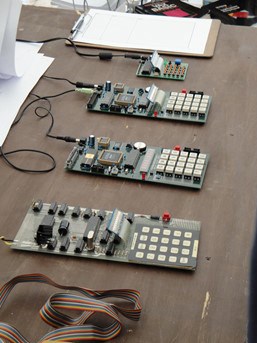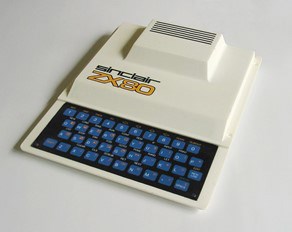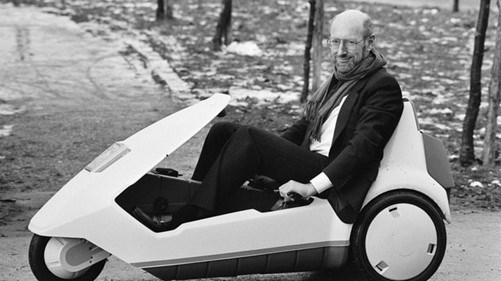As an Amstrad fanatic back in the eighties, I’ll admit I had no love for the Spectrum. The rivalry amongst friends at my school was very real, and there was a clear divide between owners of the two computers. Then there were the exiled Commodore 64 owners who were the outliers who never really fit in with either crowd at my school. But, looking back, it was all good-natured fun. I once loaned a ZX Spectrum 48K from my sister and loved it. Similarly, once I bought an Amiga 500, I was hooked. The rivalry was just a bit of fun. Sinclair, Amstrad, Commodore – they all had fans for the right reasons. They were great fun, and the perfect initial torch bearers for PCs.
That’s the wonderful thing about the world of technology, and the fondest memory I have growing up – talking about the latest leaps in computer development with fellow geeks. Back then, though, we were nerds. We knew how all the computers in the library worked, and the teachers looked to us for advice on how to hook up the AV equipment. We had a Star Trek club. We sat around and pitted Alan Sugar against Clive Sinclair in a Top Trumps style battle, where rubberised keys on a keyboard were matched against the reliability and thunk of a mechanical keyboard.
Before we go any further, may I present to you, fellow nostalgic reader, the sound of the eighties:
What a wonderful sound that was.
With the nostalgic fires stoked, I invite you to enjoy this “highlights reel” article: a timeline of notable achievements, and an homage to Sir Clive Sinclair. A man known for being a prolific inventor, genius and for blazing the trail for modern computing and consumer electronics throughout his lifetime.
Sir Clive Sinclair: 1940 - 2021
- 1940: Sir Clive Marles Sinclair is born on 30th July 1940 in London
- 1957: At the age of 17, he completes his secondary education at St. George’s College in Weybridge and starts work as a technical journalist at Practical Wireless for four years, then later becomes an editor at Bernards Publishers Ltd.
- 1961/1962: He starts his first company: Sinclair Radionics, based in Cambridge. The company develops its first product, the Sinclair Micro-Amplifier. The tiny Micro-Amplifier kit cost twenty-eight shillings and sixpence plus postage and would become an early example of the miniaturisation that Sir Clive has so much fondness for. Several thousand units were sold and were testament to the imaginative business model of having assembly and distribution handled by two Cambridgeshire companies whilst he continued to work as a technical editor of the journal, Instrument Practice.
Courtesy: Planet Sinclair
- 1967: Sinclair Radionics reaches a turnover of £100,000 (around £1,856,179 in today’s money), now located in Newmarket Road, Cambridge. Sinclair’s product range now includes the "Stereo 25", a low-cost consumer pre-amp control system, and the "Micro-FM" - "the world's first pocket-size FM tuner-receiver". Other products include the "X-10" amplifier, and the "Micro-6", matchbox-size radio, which Sinclair claimed was the "world's smallest radio” which could be worn on the wrist using Sinclair’s "Transrista".
Image Courtesy of Digitiser2000.com
- Late 1967: Sinclair launches the famous “Executive”, the world’s first pocket calculator, priced at a previously unheard of £79. The Executive would go on to win numerous design awards with sales of £2.5m.The “Cambridge” range of products would see Sinclair become number one in the UK calculator market.
Commons Wikimedia
- 1973 – 1975: Investment into research and development at Sinclair Radionics is increased as the company seeks to bring digital watches, pocket televisions and instruments into the market. This heavy investment pays dividends, with Sinclair producing a low-cost digital multimeter - the DM2 - and the digital wrist watch, the infamous “Black Watch”. The Black Watch used an integrated circuit technology – I2L, a new type of chip technology. Launched in September 1975 at £17.95 in kit form and £24.95 pre-built, the Black Watch would almost break Sinclair’s company, with a litany of problems, including: -
- The watch was rendered useless if it came into contact with nylon static
- Battery life was around ten days
- The quartz timing crystal was so temperature sensitive that it ran at different speeds in winter and summer (which would make owning one in England… problematic)
- The kit form Black Watch was notoriously difficult to construct for hobbyists
Image Courtesy: Planet Sinclair
- 1975 – 1976: Sinclair makes a loss of £355,000 for 1975-6 on a turnover of £5.6m due to supply issues with the Black Watch and the sheer number of returns & repairs.In 1976, Sinclair Radionics had a supply and demand problem which meant their “Microvision” TV was unable to get the product out in time for consumer response, meaning the company was left with unsold stock.The National Enterprise Board (NEB) bought a 43% interest in the company in 1976 enabling Sinclair to recover and soldier on.
Image Courtesy: Digitiser2000.com
- 1977: The Sinclair Wrist Calculator is a hit with consumers, but being a kit form product, had its own problems. The product was almost impossible to assemble as it shipped with the wrong sized parts.The most significant product in the Sinclair range would be launched in 1977 – the MK14 Microprocessor. Selling tens of thousands of units, the MK14 would signal the kind of products Sinclair would eventually see incredible success. The kit shipped with 20-key keyboard, 256 bytes of RAM, and 512 ROM, with optional VDU to enable 32×16 text or 64×64 graphics display (an upgrade on the supplied seven segment display).With relationships frayed between Sir Clive and the NEB, who had brought in a managing director (Norman Hewitt) and begun selling off television and watch lines, Sinclair had former employee, Christopher Curry, establish a second company, called Science of Cambridge Ltd, in July 1977. Science of Cambridge would produce products borne from ideas of students at nearby Cambridge University, and a wrist calculator kit would eventually pay the bills to keep the company afloat in the late seventies.

MK14 - Commons Wikimedia
Copyright Nigel Tout | Image Courtesy: VintageCalculators.com
- 1978: Curry leaves Science of Cambridge to co-found Acorn Computers with Hermann Hausser. They would develop the Acorn System 75, which was basically an MK14 chip with a keyboard. Sinclair, unnerved by the competition, began looking to develop a computer that could rival the £400 Commodore PET, aiming to build a microcomputer for under £100.
- 1979: Sir Clive’s long-time ally from the beginning of Sinclair Radionics – Jim Westwood – started work on the ZX80 project at Science of Cambridge. By this time, the NEB had decided to break up Sinclair Radionics, keeping the instruments division as Sinclair Electronics, but selling its television division to Binatone. The NEB also sold the calculator division to ESL Bristol. At this point, Sir Clive Sinclair had left Sinclair Radionics, and would begin to focus on his clear vision of a microcomputer with Jim Westwood.
- 1980: The ZX80 launched February 1980 at £79.95 in a kit form and at the target price of £99.95 ready-built. Under £100 by five pence. The BASIC programmed ZX80 was a huge hit for Science of Cambridge, which renamed the same year to Sinclair Computers Ltd, then again to Sinclair Research.

ZX80 - Commons Wikimedia
- 1981: In the UK, the BBC had planned a television series that would teach viewers programming. Christopher Curry and Sir Clive Sinclair both pressured the BBC to use computers made by Sinclair Computers – but would ultimately lose to Acorn. The purpose built and branded BBC Micro - originally named Acorn Proton – was the result. This turn of fate would be a blessing in disguise, however, as the race to produce a computer for the BBC series expedited the production of the Sinclair ZX81, which would launch in 1981 to an incredible reception. Sales of the ZX80 and ZX81 were among the highest selling brands, and with the aid of public groups and forums, cemented the computers in technology history.
- 1982: In February 1982, the legendary colour ZX Spectrum is launched at £125/16KB RAM and £175/48KB RAM, eventually becoming Britain's best-selling microcomputer. Sinclair Research has a pre-tax profit of £9.2 million (turnover of £27.6 million).
Image Courtesy: ComputingHistory.org.uk
- 1983: Sinclair continued the success of the ZX Spectrum line of computers, though the market seemed to view these microcomputers as toys rather than being useful for important tasks. This public feeling was possibly the catalyst for the development of the Sinclair QL. The ZX Microdrive storage facility is released, making the ZX range a complete home system.
- 1984: The £399 Sinclair QL launches in January; the first computer for home and business applications which relied on the powerful Motorola 68000 ‘chip’ family as a processor. In September, Sinclair Research launched a flat-screen pocket TV – the Sinclair FTV1/TV80.
- 1985: In 1983, Sinclair Vehicles Ltd. had been set up to take charge of Sir Clive’s vision for electric vehicles, which originally began as a concept back in 1979 with Tony Wood Rogers, a former Radionics employee. The company's only launch was the ill-fated Sinclair C5 in January 1985. The C5 was expected to sell many tens of thousands of units, but only managed to sell 4,500 from a 14,000 stockpile. The plug was pulled in August 1085. Happily, the C5 lives on as one of the best attempts at bringing mainstream electric vehicles into the world. There aren’t many people in the UK who don’t remember Sir Clive smiling on the news, sat in the revolutionary C5.

Courtesy: rte.ie
- 1986: In April, Sinclair sold the majority of Sinclair Research to Amstrad for a reported £5 million. Sinclair Research Ltd. was then scaled back to a research and development business and holding company.
- 1990 - 1992: Sinclair Research Ltd. was reduced to just two employees along with Sir Clive Sinclair. This did not prevent the company from dipping its toe in profitable markets, though. Undeterred by the failure of the C5, Sinclair kept his vision of electric powered travel intact, and proceeded to develop the Zike – an electric bike that was pitched as "The greatest invention since the bicycle". Production of the Zike was halted after just six months, but many have applauded the early attempt in that it was just ‘before its time’. In 2021, almost 25% of all UK bike sales are electric. Sinclair would later develop the Zeta - or Zero-Emission Transport Accessory, which was designed for bikes and would provide a powered boost. This was later adapted for wheelchair usage and sold significantly better than the Zike.
- 2001 - 2003: With eleven years of R&D in the bag, Sinclair was ready to launch more products thanks to a working partnership with Hong Kong's Daka Designs. The Sinclair "ZA20 Wheelchair Drive Unit" was the first of these products, which allowed wheelchair users to climb stairs.
- This partnership also led to the SeaDoo Sea Scooter, an underwater propulsion unit for SCUBA divers.
Sir Clive Sinclair’s Legacy
The most magnificent things come from the restless mind of an inventor, and one can’t help wondering what Sir Clive would have been capable of if he had been born just a little later in the seventies or eighties? Most of his inventions and concepts were indeed having to stay on a drawing board until technology caught up, such as the portable flat screen TV. His attempts at electric powered vehicles may also have been met with a much more favourable reception in the last ten years, for example.
Speaking of his relationship with technology, Sir Clive said that he preferred not to use the internet or email and preferred the telephone. He also sagely said in 2014 "Once you start to make machines that are rivalling and surpassing humans with intelligence, it's going to be very difficult for us to survive. It's just an inevitability."
His legacy continues to delight and entertain Spectrum fans to this day, and even though I have already put my head above the parapet in terms of Amstrad or Spectrum – I would have killed for rubber keys on my keyboard and would also have loved to be able to slip my Amstrad into my backpack to go play at my friend’s house after school. The ZX Spectrum was – and is - wonderful, with a second-hand price tag of £150 in the UK, the microcomputer is still iconic. Games alone go for upwards of £20.
Whilst most media had focused negatively on his lively private life, the nerds who were his biggest fans realised that our time was finally here. The rise of the geek. Those who were once laughed at for sitting at a screen and learning to make their own simple games for fun were now relied upon by most companies and home users. The personal computer would go on to enable the internet to explode across the world, and billions of people would eventually rely on “an IT person”. The BASIC programmers of the eighties would later become HTML, JavaScript and PHP coders and amass fortunes during the dotcom period. If they kept their shirt during the bubble burst, then they were ready for the next big thing – mobile apps. All these things made possible thanks to the inventors and pioneers like Sir Clive Sinclair.
Sir Clive’s lasting legacy, I feel, was his ability to put a device in our homes and allow people to choose how to use it. Some used Spectrums for games. Some used them to learn how to code. Some used them for both. Along with other computer manufacturers, Sinclair had created an opportunity for the masses, which has never slowed down. From the MK14 to the AMD Ryzen, the journey has been amazing to witness from a technological standpoint. The price of owning a home computer has remained pretty much the same in terms of inflation, and home computing is extremely accessible.
What is more amazing, however, is that when I hear the sound of an eighties game loading, I still feel like a ten-year-old, and I’m not sure you can put a price on that.





